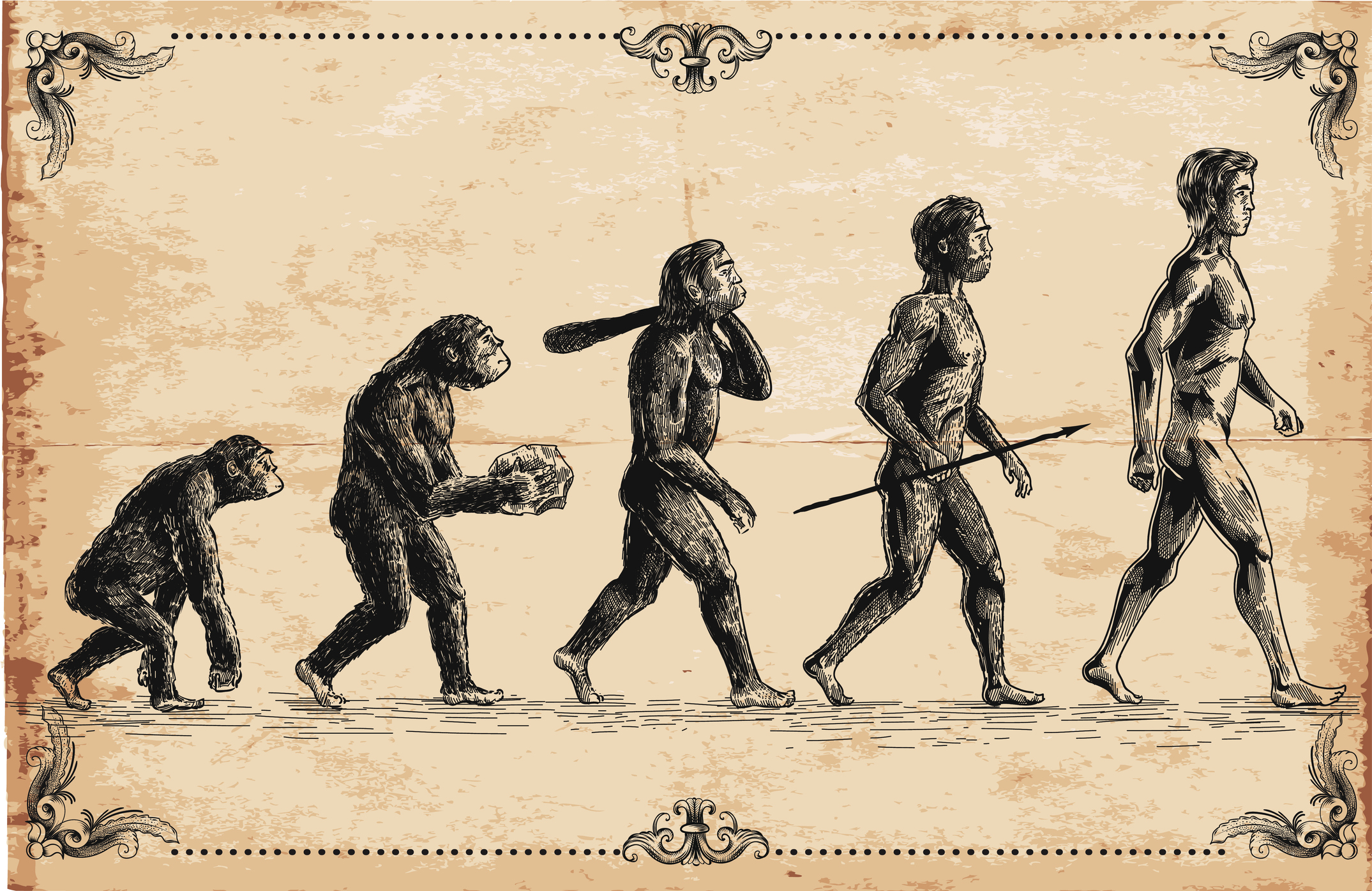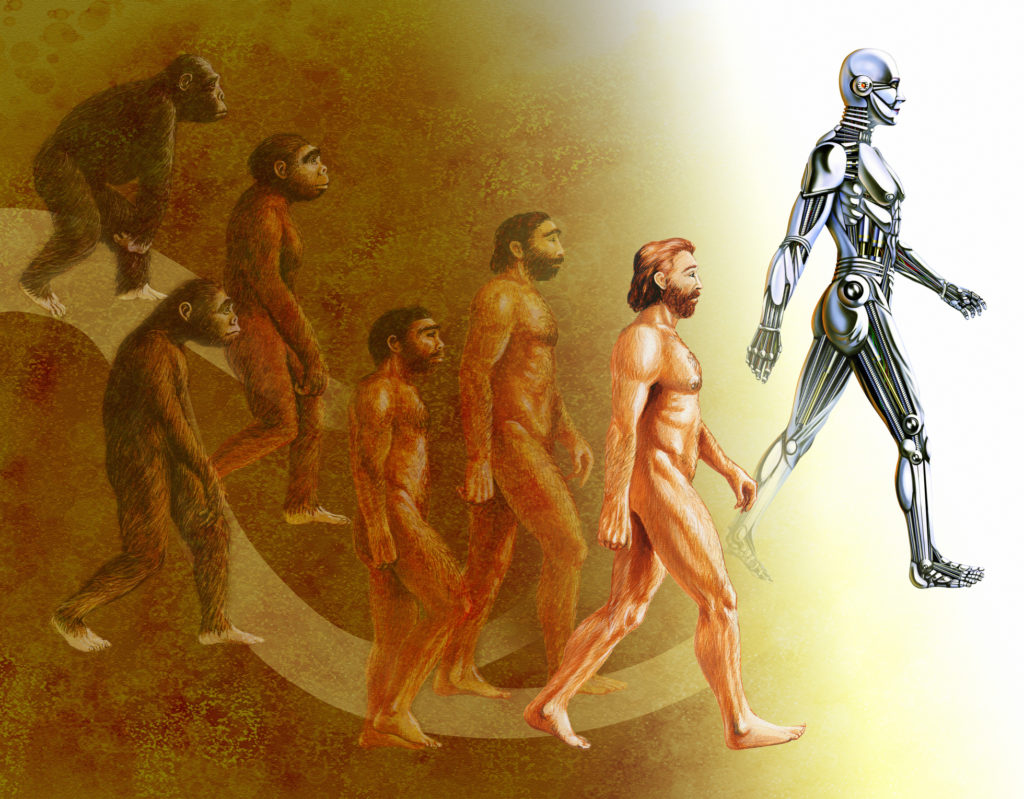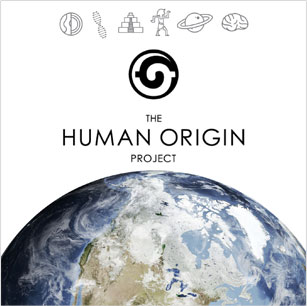Human Evolution has puzzled scientists for centuries. Today we are most familiar with the Out of Africa Theory for modern humans. It’s counterpart ‘multi-regional hypothesis’ far less talked about. While the Out of Africa theory is most accepted, evidence is still arising that could eventually see a new theory of evolution take place.
Most people today have heard of the Out of Africa theory for human evolution. It was back in the 19th century, when Charles Darwin suggested that our human ancestors may have evolved in Africa. It was based on the fossil records uncovered at the time. In the next century, two theories were floated to explain paleo-anthropological records.
The other, is called the multi-regional hypothesis. It proposes that long ago, after exiting Africa, multiple homo species settled throughout the world. Modern humans then evolved from these ancestors across different locations worldwide.
According to the multi-regional hypothesis, the ancestor, Homo erectus, seeded Homo sapiens populations all over the world. Proponents explain the rise of modern human DNA from a continuous exchange of genetic material occurred over a span of hundreds of thousands of years.
The Out of Africa theory describes a much simpler and recent evolution of modern humans, moving from Africa to Eurasia and then globally.
To this day Out of Africa, is widely accepted theory among scientists.
However the alternate has a growing body of evidence to show that modern humans could have been outside Africa at an earlier than established date.
How was the Out of Africa Theory Established?
Out of Africa was only established in the 90’s during a debate as to the age of modern humans.
The development of genetic analysis tools in the 1980s helped scientists grow attracted to the out of Africa hypothesis. Matches between the DNA of living modern humans and fossil remains verified that H. sapiens evolved several hundred thousand years ago on African soil.
The theory explains that while numerous human-like species walked the planet, only one arose into modern man.
New evidence continues to swing the pendulum of knowledge about human origin between these two theories.
When did Humans Leave Africa?

Image: An overview of the Out of Africa Theory Map Source
Today it’s still far more accepted that humans are a relatively young species.
Out of Africa theory says the first modern man first evolved in Africa about 200,000 years ago. Further, the single and original H. sapiens was believed to have travelled out of Africa around 70 000 years ago.
It’s believed that several branches of modern humans, beginning around 270 000 years ago, and certainly 130 000 years ago came out of Northern Africa. These waves were either died out or retreated, before the last and final wave travelled across the globe.
Successful modern humans were said to have replaced ancient humans (like the Neanderthals) without mating with them. In recent years, new discoveries have challenged multiple aspects of this theory.
Recently, researchers presented their discovery of H. sapiens fossils from Morocco. Called Jebel Irhoud, the bones were dated back to around 315,000 years ago.
The finding of the bones of a modern humans in Africa at such an early date pushes our origin story back by more than 100,000 years.
Other studies have also suggested that an early migration out of Africa may have occurred around 120,000 years ago.
To make things even more interesting, in recent years, Neanderthal DNA evidence suggests modern and archaic humans may have interbred.
How and when did humans migrate out of Africa?
A problem confounding scientists is when and how many types of humans resulted in our modern form.
Scientists are of the opinion that humans may have taken a few different routes on their move out of Africa. Recent evidence also suggests that there may have been more than one exodus. These waves of migration out of the continent likely happened at different time points.
One route taken by the early humans was likely across the Bab-al-Mandab Strait that runs between Yemen from Djibouti. From there, they quickly moved along coastal India, reaching Southeast Asia and Australia around 50,000 years ago.
Another group moved into the Middle East and southern Central Asia a little after 50,000 years ago. Then, the modern humans moved across Europe and the northern reaches of Asia.
Who were the First Humans in Africa?
Previously, the oldest H. sapiens fossils were thought to be from the Omo Kibish and Herto sites in Ethiopia that are dated to around 195,000 and 160,000 years ago, respectively.
The recently discovered specimens, Jebel Irhoud (Morocco) and Florisbad (South Africa), were dated to about 315,000 and 259,000 years ago, respectively. These “new” remains imply modern man evolved much earlier than anticipated.
Outside Africa, the oldest known H. sapiens fossils were at two sites in Israel, Skhul and Qafzeh, and had been dated to only between 90,000 and 120,000 years old. But a recent finding of a jaw bone in Misliya cave, Israel, has pushed the date of modern man’s first migration back much further.
According to the researchers, early humans may have wandered out of Africa more than 50,000 years ago than previously thought. The fossil, which includes a part of the upper jaw and teeth, was dated to between 177,000 and 194,000 years ago.
The scientists made an anatomical comparison between the fossilized jawbone and those of other human species. It was found to most similar to that of H. sapiens. There are some scientists that say more evidence may be needed. All in all, these results suggest modern man may have been present outside of Africa more than 50,000 years earlier than previously believed.
These and other fossils suggest that H. sapiens may have evolved at multiple places in Africa. This development goes against the previously-held theory that humans arose at a particular place in Africa.
Indeed, modern humans may have arisen at multiple spots.
Why did early humans migrate Out of Africa?
While researchers aren’t quite clear on why humans may have been driven to move, they suspect climatic changes. The dramatic cold possibly made life quite uncomfortable for early humans.
Changes in the African continent’s climate may have forced modern humans to seek greener grass elsewhere.
Out of Africa Theory vs Multi-Regional Theory
In 1927, near Beijing Davidson Black uncovered the remains of a human-like ancestor that would rock the world of anthropologists. Originally a single tooth, excavations would reveal several skullcaps and mandibles, facial and limb bones of 40 skeletons. The dating of the fossils revealed a time span of between 7700 to 230 000 years ago.
Franz Weidenreich, a German anthropologist used the findings to help develop the multi-regional approach to understanding human evolution. His study of Peking Man—a H. erectus fossil found in China—led him to conclude that similarities between past and present human species in the region must have arisen from evolutionary continuity.
The Java Man—a H. erectus fossil from Indonesia—left Milford Wolpoff, an American palaeoanthropologist, similarly convinced. He went on to coin the term “multi-regional hypothesis” in the 1980s. However, recent dating of later H. erectus in Indonesia imply they only lived until about 50,000 years ago when modern humans from Africa may have come.
On the other hand, China showcases examples of skulls from 100,000 years ago that seem to fall halfway between H. erectus and H. sapiens.
Conclusion
New fossils and discoveries are constantly rewriting the history of modern humans’ movements outside of Africa. Only recently scientists have found evidence that modern humans may have evolved more than 300,000 years ago.
This pushes back old estimates by over a hundred thousand years. Newly found remains also suggest that the first wave of migration may have occurred earlier than 50,000 years than we initially believed.
Multi-regional evolution could see a renewal in popularity as new pieces of the puzzle are added in. At the very least, changes to the Out of Africa theory is now occuring.
Our understanding of the reasons behind the move out of the continent will only deepen as our clarity on the timelines grows. This will only happen as more and more fossils are dug up around the world.
Human evolution, is evolving.
Further reading:
http://www.bbc.co.uk/worldservice/africa/features/storyofafrica/2chapter2.shtml
https://www.scientificamerican.com/article/controversial-fossil-hints-homo-sapiens-blazed-a-trail-out-of-africa-earlier-than-thought/
https://www.ncbi.nlm.nih.gov/pmc/articles/PMC4844272/
http://science.sciencemag.org/content/359/6374/389
https://www.sciencemag.org/news/2018/04/human-finger-bone-points-early-exodus-out-africa?r3f_986=https://www.google.com/
https://genographic.nationalgeographic.com/human-journey/
https://psmag.com/news/why-and-when-did-early-humans-leave-africa


 Vector picture of Human Evolution
Vector picture of Human Evolution
























